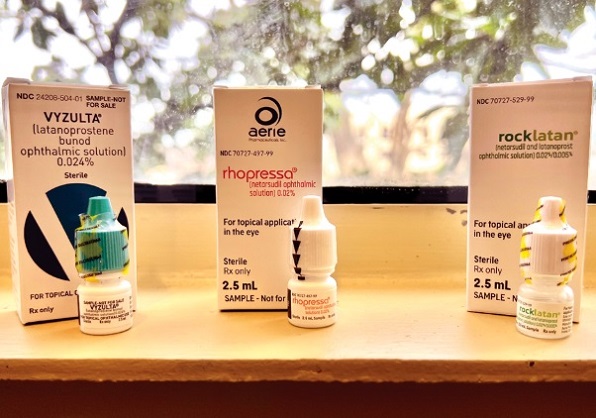Study Warns That Rock Inhibitors Used in Glaucoma and Diabetic Retinopathy Treatments Can Cause Corneal Epithelial Edema
Nikhil Prasad Fact checked by:Thailand Medical News Team Feb 12, 2025 10 months, 2 weeks, 1 day, 2 hours, 36 minutes ago
Medical News: A New Concern with ROCK Inhibitors
In recent years, Rho-associated kinase (ROCK) inhibitors have emerged as a promising treatment in ophthalmology. These drugs, including ripasudil and netarsudil, have been widely used for managing glaucoma, diabetic retinopathy, and corneal endothelial disorders. They work by lowering intraocular pressure and improving corneal endothelial function. However, new research suggests that these drugs might also have unintended side effects, particularly in the corneal epithelium.
 Study Warns That Rock Inhibitors Used in Glaucoma and Diabetic Retinopathy Treatments Can Cause
Study Warns That Rock Inhibitors Used in Glaucoma and Diabetic Retinopathy Treatments Can Cause
Corneal Epithelial Edema
This
Medical News report highlights a new study that explores the impact of ROCK inhibitors on corneal cells, shedding light on their benefits and risks. The study was conducted by researchers from the Department of Ophthalmology at the University Hospital Erlangen in Germany, the Department of Biomedical Engineering at Doshisha University in Japan, and the Department of Frontier Medical Science and Technology for Ophthalmology at Kyoto Prefectural University of Medicine.
Findings From the Study
The study analyzed the effects of two commonly used ROCK inhibitors, ripasudil and netarsudil, on corneal endothelial and epithelial cells. Researchers conducted laboratory tests to assess their impact on cell migration, proliferation, viability, and barrier function. The findings were eye-opening:
-Positive Effects on Corneal Endothelium: Both drugs were found to improve the corneal endothelial pump and barrier function. This means they help maintain corneal clarity by regulating fluid balance, which is particularly beneficial for patients with endothelial dysfunction.
-Negative Effects on Corneal Epithelium: While ripasudil enhanced the integrity of epithelial cell junctions, netarsudil had the opposite effect. Netarsudil disrupted epithelial barrier function, leading to increased fluid permeability. This could explain why some patients develop reticular corneal epithelial edema - a condition where excess fluid forms cyst-like patterns on the corneal surface.
Why This Matters
The study also reported a case of a patient who developed reticular corneal epithelial edema after using a combination of netarsudil and latanoprost (marketed as Roclanda). The condition resolved once the medication was discontinued. This suggests that, while beneficial for endothelial function, netarsudil may pose risks for certain patients, especially those with a history of corneal endothelial dysfunction or previous eye surgeries.
Understanding The Mechanism
The researchers identified two possible explanations for netarsudil’s negative effects on the epithelium:
-Direct Cellular Impact: Netarsudil alters the expression of key genes responsible for maintaining epithelial cell junctions. This weakens the natural barrier t
hat prevents excessive fluid entry.
-Indirect Structural Changes: The drug disrupts the actin cytoskeleton, which plays a role in stabilizing cell junctions. When this structure is weakened, the epithelial cells become more permeable to fluid.
Implications For Treatment
These findings suggest that while ROCK inhibitors have significant therapeutic benefits, their use should be carefully monitored. Patients with a predisposition to corneal edema may need alternative treatments or closer observation when using netarsudil.
The researchers recommend further studies, particularly using 3D models of corneal epithelial cells, to better understand the full impact of these drugs.
Additionally, ophthalmologists should weigh the risks and benefits before prescribing these medications, especially in patients with pre-existing corneal conditions.
Conclusion
ROCK inhibitors represent a major advancement in ophthalmic treatment, particularly for glaucoma and endothelial disorders. However, their effects on the corneal epithelium highlight the need for cautious use. While ripasudil appears to strengthen the epithelial barrier, netarsudil may lead to complications in certain individuals. Patients and doctors must stay informed about these potential risks to ensure safe and effective treatment choices.
The study findings were published in the peer-reviewed journal: Cells.
https://www.mdpi.com/2073-4409/14/4/258
For the Glaucoma News, keep on logging to Thailand
Medical News.
Read Also:
https://www.thailandmedical.news/news/canadian-study-finds-that-most-present-drugs-used-for-glaucoma-treatments-can-cause-adverse-issues
https://www.thailandmedical.news/news/glaucoma-news-texas-study-alarmingly-finds-that-glucocorticoids-and-steroids-can-cause-glaucoma-and-also-accelerate-glaucoma-progression
https://www.thailandmedical.news/news/breaking-news-study-finds-that-calcium-channel-blockers-used-for-hypertension-actually-increased-odds-for-glaucoma-and-glaucoma-progression
https://www.thailandmedical.news/articles/glaucoma-news
